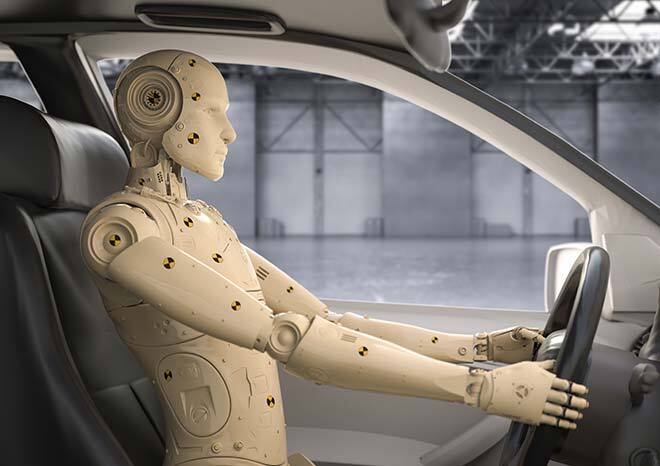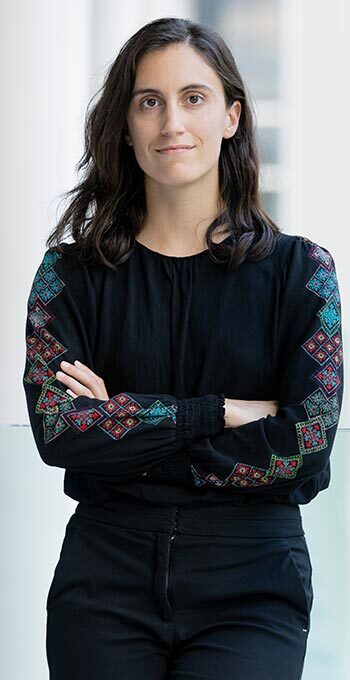Advances in Biomechanical Engineering with Respect to Safety

Purchased from Gettyimages. Copyright.
Marie-Hélène Beauséjour has always been fascinated by the biomechanics of the human body. An accomplished athlete with a talent for science, she wanted to work in a field that would allow her to help people. The biomedical engineering program offered by Polytechnique Montréal addressed her aspirations.
After earning her bachelor’s degree in biomedical engineering, Marie-Hélène Beauséjour began a master’s degree in mechanical engineering at ÉTS, where she was offered an accelerated path to a co-supervised PhD. Thus, she completed her postgraduate studies at both ÉTS and the University of Aix-Marseille. “I have a PhD in Research Engineering from ÉTS and a PhD in Human Movement Science from the University of Aix-Marseille.”
Her thesis focused on the biomechanical study of spinal lesion mechanisms and spinal cord injuries. Marie-Hélène aims to understand the mechanisms triggered by traumatic injuries and to evaluate designs of new protective devices, especially for target groups often missing in biomechanical testing, namely women and seniors.
The Trigger
A big fan of podcasts, Marie-Hélène was compelled by researcher Stacy Sims’s program “Women are Not Small Men,” which dealt with gender bias in medical research. This issue became a determining factor in the direction of Marie-Hélène Beauséjour’s research. “My work was in trauma, and I found that most studies on female safety in the automotive industry were based on male body types.”
Indeed, there are significant differences in intervertebral mobility and head/spine kinematics between the genders. Yet no biofidelic mannequin represents the female spine, or elderly spine for that matter, which hinders the development of safe vehicles for these population segments.

A “One Size Fits All” Mindset
Studies show that women have different postures in a car—they tend to sit forward. As for seniors, numerical models show that they are more vulnerable to impacts due to spinal degeneration. Seats and headrests should be designed to cushion impacts in a personalized manner. This implies selecting materials and designs better suited to various body shapes. Science-fiction? Not for Professor Beauséjour—she is already working on innovative projects such as improving cervical protectors.
She conducted several studies on biological models. Over the years, her research focused on the numerical modelling of neck and spine injuries. She developed expertise in the finite element method—developing a numerical copy of an entity’s components, in this case, the spine. She aims to create a model that reacts as realistically as possible under an applied force. After her thesis, she worked as a postdoctoral researcher at Gustave Eiffel University on the development of evaluation methods for the efficiency of cervical protective devices in a project with the international automobile federation. This project allowed her to develop an expertise on evaluation and design of protective devices.
Teaching is Rediscovering!
 “Teaching is learning twice,” claims Marie-Hélène Beauséjour, who is looking forward to sharing the results of her years of research with the new cohort of engineers at ÉTS. In addition to supervising students during their internships, Marie-Hélène has also taught courses in static mechanics and in the design of orthotics and prosthetics. Using an active teaching approach, Professor Beauséjour’s main goal is to “train people who can think on their own and use their skills to solve problems.”
“Teaching is learning twice,” claims Marie-Hélène Beauséjour, who is looking forward to sharing the results of her years of research with the new cohort of engineers at ÉTS. In addition to supervising students during their internships, Marie-Hélène has also taught courses in static mechanics and in the design of orthotics and prosthetics. Using an active teaching approach, Professor Beauséjour’s main goal is to “train people who can think on their own and use their skills to solve problems.”
Biomechanical Engineering in the Context of Inclusion
There is a need to catch up on clinical trials involving women and seniors. While a greater diversity of subjects may cost more and delay the marketing of some products and devices, it could also save lives. According to Marie-Hélène Beauséjour, awareness of this bias introduces the prospect of in-depth investigating in uncharted research fields.
Getting off the Beaten Path
Climbing steep walls, breaking down prejudices, and pushing limits—both in the field of sports and in research—are in Marie-Hélène Beauséjour’s DNA. Innovation comes in unusual ways. Marie-Hélène intends to continue devoting her energies to increasing knowledge of the biomechanical complexity of the spine. Ultimately, she wishes to contribute to the customization of medical and safety devices for people generally and for women and seniors specifically.



